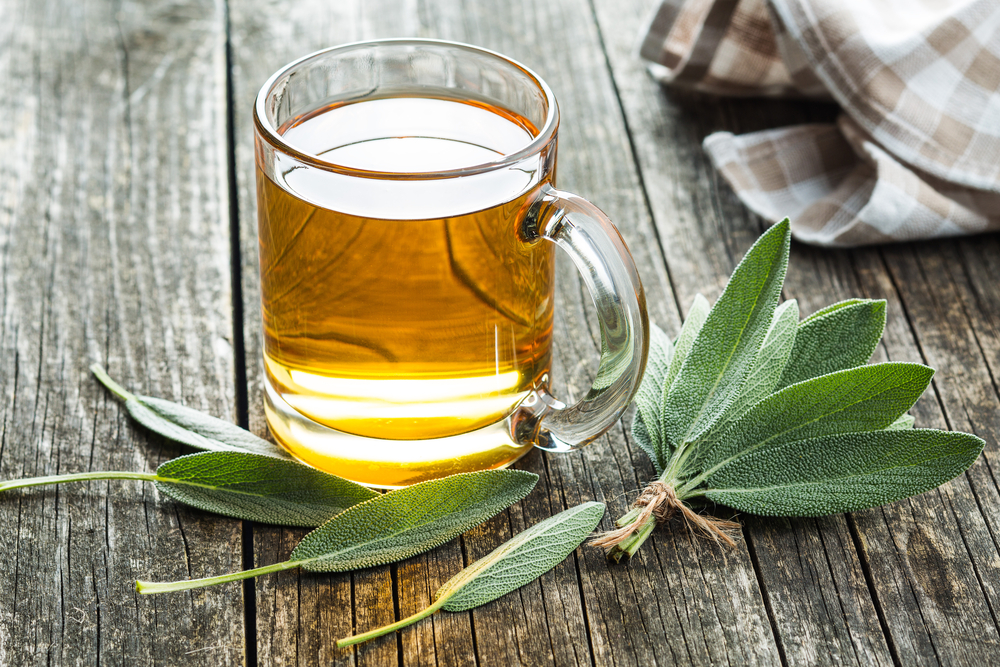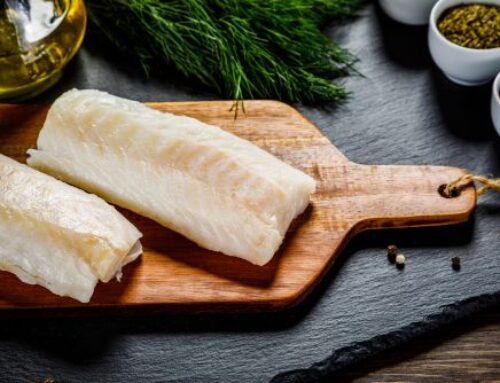Check Out the Potential Health Benefits Sassafras Tea Offer Can Offer!
Root beer may be one of the most popular beverages in the world today, but did you know that its flavor was once literally taken from a plant’s roots? The original taste of root beer was all thanks to the sassafras plant, which was extremely popular in the early 20th century because of its sweet and warm flavor and aroma.1
However, its use was eventually banned because of an animal study showing that it may cause liver damage because of an active compound. Learn more about this plant, its preparation as a tea and potential adverse reactions or you may experience from consuming it.
What Is Sassafras Tea?
Sassafras (Sassafras albidum) is a well-known plant in the South because of its unique aroma and taste. You can identify this plant through its leaves, which are 3 to 5 inches long and may be two-lobed or three-lobed. In the fall, the leaves usually take on a bright orange hue. Its young branches are bright green, which explains why the Native Americans referred to it as “green stick.”2
The Cherokee, Chippewa, Creek, Delaware and Iroquois have used this plant for centuries. It is especially popular due to its sweet and spicy taste and aroma, which is one of the reasons it’s used in root beer. It’s especially well-known in the Southeast, with most people remembering the taste and smell of sassafras tea from their childhood.3
But despite its popularity, the plant has been the subject of numerous controversies because of its active components. In 1960, sassafras use was banned by the Food and Drug Administration (FDA) as an ingredient in all types of food because of safrole, the compound responsible for the scent of sassafras root.4
In an animal study, concentrated safrole was found to cause liver damage and liver cancer if taken in large amounts.5 However, other studies suggest that if sassafras is ingested without safrole, it wouldn’t expose people to the risk. Some suggest that you can ingest sassafras tea in small amounts or you can use sassafras products that have undergone the FDA-approved process to remove the safrole content.6
What Potential Health Benefits Can Sassafras Tea Offer?
Sassafras use in North America spans hundreds of years, from the Appalachian belief that it can ward off evil to the Creole’s culinary use of its root. But aside from these, sassafras root is filled with nutrients and beneficial components, which include tannins. Some of the benefits of sassafras tea include the following:
• Contains possible diuretic properties. Sassafras has been used to promote urination, sweating and fluid congestion drainage.7 As a diuretic, sassafras may help facilitate detoxification and uric acid flushing.8
• May reduce inflammation. The anti-inflammatory properties of sassafras may assist in inflammatory conditions like arthritis. It may also help alleviate pain and discomfort caused by these conditions.9
• May help alleviate eye infections. The pith of the sassafras plant was originally used as a mucilaginous demulcent for eye infections.10 A demulcent functions as a protective layer for inflamed tissues, easing and combating further irritation.11
In addition to these, sassafras has also been used to help alleviate various skin conditions, mucositis, sprains and urinary tract infections.12 But take note that sassafras tea should not be taken for long periods of time due to the possible side effects posed by safrole. To benefit from this tea and greatly reduce the risk of complications, limit your intake to a maximum of 2 cups per day.
Here Are Sassafras Tea’s Nutrition Facts
Sassafras contains numerous beneficial active compounds, including asarone, alpha pinene and tannins. Here are the nutrition facts of sassafras tea:13
Does Sassafras Tea Contain Any Caffeine?
It is unclear whether sassafras tea contains any level of caffeine. However, it was originally consumed due to its stimulant properties.14 In addition to this, safrole, one of the most abundant compounds found in sassafras, is a precursor to methylenedioxyamphetamine (MDA), a stimulant and known hallucinogen.15
However, its apparent lack of caffeine does not mean that you can consume sassafras tea in excessive amounts. Remember that moderation is key, and getting too much of something may lead to other serious repercussions.
Here’s How You Can Make Your First Sassafras Tea Brew
Looking forward to your first mug of sassafras tea, but you’re not entirely sure how to brew your first batch? Here’s a recipe from Genius Kitchen you can try out for yourself:16
Healthy Sassafras Tea Recipe
Ingredients:
Procedure:
1. Gather or buy sassafras roots. Wash roots and cut the saplings off where the roots end. This part usually has a greenish hue.
2. Bring the water to a boil and add the roots.
3. Simmer until the water becomes a deep brownish red. Note that the darker the color, the stronger the tea will be.
4. Strain the water and add honey to taste. Serve.
How to Store Sassafras Roots or Tea
If you’ve just harvested plenty of sassafras roots to last the winter, the next question you’ll probably be asking would be on how you’d store them correctly. Here is a step-by-step guide from Cynthia Hoover on prolonging the shelf life of your sassafras roots:17
| Shake the sassafras roots over the compost bin to get rid of any loose dirt. |
| Put the roots in your kitchen sink and submerge them in lukewarm water. Make sure you sanitize your sink before doing this step to make sure you’re not letting the roots come into contact with any substance. |
| Using a scrub brush, scrub off as much dirt as you can from the roots. |
| Once the roots are clean, make sure the roots are completely dried out before storage. You can dry them out using a dehydrator or simply using an oven. |
| If you plan on using an oven, set it to 120 degrees Celsius (248 degrees Fahrenheit). Place the roots on a baking sheet and dry them fully. |
| You may also use screens to dry the roots out in case you don’t want to use a dehydrator or an oven. Put the sassafras roots on screens and place in a cool, dry place. Sassafras roots dried using this method usually take about three to 15 days to dry out completely. |
If prepared correctly, dried sassafras roots may last up to a year. However, to avoid possible adverse effects, just make sure you don’t overindulge and drink sassafras tea for long stretches of time.
Look Out for These Sassafras Tea Side Effects and Contraindications
While sassafras has potential health benefits, remember that drinking sassafras tea may also cause a significant amount of damage if taken in excess. Studies on sassafras show that safrole may trigger the development of liver cancer. A 1976 study shows safrole can lead to liver damage and cancer when administered orally or through a stomach tube. While safrole is present in other herbs and spices, including cinnamon, nutmeg and ginger, it only appears in these other foods in small amounts.18
Other side effects include hot flashes, increased perspiration, vomiting, high blood pressure and hallucinations. Take note that drinking sassafras tea when you’re pregnant is not recommended because of the limited studies that discuss its safety.19
Frequently Asked Questions (FAQs) About Sassafras Tea
Q: What is sassafras good for?
A: Sassafras root contains numerous beneficial components that may help improve immunity and promote body detoxification.
Q: Is sassafras tea safe?
A: The safety of sassafras tea has been a topic of debate because of the high amounts of safrole in it. However, moderate use of this tea may be beneficial to some people. Just make sure that you don’t drink excessive amounts of it for long periods of time. Limit your intake to 2 cups per day for no longer than a month.
Q: Where can you buy sassafras tea?
A: You can find sassafras teabags and fresh sassafras root at numerous health stores and online shops. Just make sure that you’re getting high-quality sassafras root so you can maximize the nutrients that this root contains.
Q: What is sassafras tea used for?
A: Sassafras tea may be used to help boost the immune system, promote detoxification and increase sweating. It is especially beneficial for people who are suffering from colds and the flu to assist the body in fighting off the infection.
https://articles.mercola.com/teas/sassafras-tea.aspx
- 1 The New Encyclopedia of Southern Culture: Volume 8, 2014
- 2 Alabama Forestry Commission, Sassafras
- 3, 6 Clemson University, Sassafras Tea: Using a Traditional Method of Preparation […]
- 4 U.S. Food and Drug Administration, CFR – Code of Federal Regulations Title 21
- 5 Food Chem Toxicol. 1999 Jul;37(7):697-702.
- 7 The Revolution Will Not Be Microwaved: Inside America’s Underground Food Movements, 2006
- 8 The Complete Guide to Natural Healing, 2015
- 9, 14 Remedies and Cures for the Common Diseases, 2015
- 10 Handbook of Medicinal Herbs: Herbal Reference Library, 2018
- 11 Handbook of Herbs and Spices, 2012
- 12 Memorial Sloan Kettering Cancer Center, Sassafras
- 13 SparkRecipes, Calories in Sassafras Traditional Native American Tea
- 15 Recovery First, What is Sassafras?
- 16 Genius Kitchen, Sassafras Tea
- 17 HubPages, How to Harvest and Use Sassafras
- 18 National Toxicology Program, Safrole
- 19 WebMD, Sassafras





I have been making sassafrass tea for about 30 years.
An alternate way of storing them works best for me.
I dig them in the winter, usually on the coldest day in January, this drives the sap into the root and allows a richer brew with less root being consumed.
Next they are washed and cut into 1/4 -to1/2 inch lengths, put into freezer bags and covered with water, then put into the freezer until needed. They will keep without any problems until the next dig.